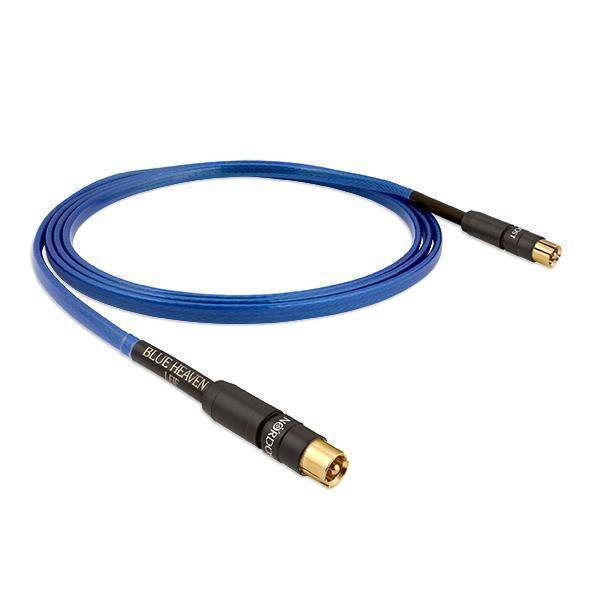Need a flat subwoofer cable to complete your home theater setup? We’ll walk you through if it’s actually necessary and 4 available options.
Table of Contents
Why Would I Need A Flat Subwoofer Cable?
Subwoofers shouldn’t be an afterthought in a good home theater system. A powered subwoofer or two is key to the reproduction of very low frequencies essential to home theater. Unfortunately, speaker placement can make subwoofer cable management hard. Home theater enthusiasts who want great bass and optimal bass response often experiment with a subwoofer in various positions. A sub crawl is often used during this process. This can result in subwoofer placement in a spot that makes cable management difficult.
If the subwoofer is far away from your AV receiver, you’ll have to be creative. For home theaters with projectors, AV receivers might be even further away. Most subwoofers are powered or active speakers. This means you’ll need to run two cables. A power cord to reach the outlet and subwoofer cable to reach the sub pre-out. People sometimes opt for a thin or flat subwoofer cable. Running the cable under a carpet is possible with a flat subwoofer cable. Unfortunately, there are limited options for actually obtaining one. It’s easy to see the appeal. A flat subwoofer cable can make a lot of sense if you have a lot of space to cover. Let’s break down your actual options.
Options For Flat Subwoofer Cable

Your first instinct might be to just purchase one from an online store. You’ll quickly find there aren’t really any commercially available options. A quick Amazon search provides no real choices. That leaves you with a few options.
1. Buy A Nordost Subwoofer Cable
Nordost Corporation is an American company that makes and sells cables, connectors, and accessories for the high-end AV market. They have a lot of niche products for audiophiles and home theater enthusiasts. You will find they make one of the only commercially available flat subwoofer cables with their Blue Heaven Subwoofer cable. The catch is they are very expensive ($400+) and stock availability is sparse. Nordost sells through a list of authorized dealers you can find on their site. Many are AV installers who use Nordost accessories in commercial and residential home theater installations. If you’re lucky, you can find an actual retailer near you. Purchasing online is another option. Most available products are used, so your mileage may vary. There are only a couple of websites that will sell it new including Upscale Audio.
2. Run The Subwoofer Cable In Or Along Wall
If you can’t run it under a carpet, running subwoofer cable along the wall or in the wall is an option also. Quality cord cover kits to conceal cables are very cheap. Many are also paintable to blend no matter your room color. There might be a little work involved upfront. Once finished, it’s very much out of sight out of mind. Running cable in your wall is a little more involved, but simpler during a new build or remodel project. Just make sure to use CL2 cable that’s rated for use in walls like this one.
3. Use A Wireless Subwoofer Connection
Believe it or not, wireless connections can be used for subwoofers. They are readily available, popular, and functional. The Klipsch wireless kit is one popular option. It works for multiple brands, including the Jamo C912 that we’ve reviewed. SVS also has its own wireless audio adapter. You’ll need to confirm compatibility with the subwoofer you currently have. Not all subwoofers are capable of wireless connectivity.
4. Make Your Own Flat Subwoofer Cable
Another option is to create your own subwoofer cable. A DIY cable is also a good idea if you want to limit your budget. You can start by purchasing some flat speaker wire and an F to RCA adapter. The gauge of the speaker wire isn’t as important for weak line level signals. Most of the options I found for flat speaker wire just happened to be 16 gauge.
While you may need a few extra tools, the rest of the process is pretty simple. There are also a lot of helpful videos on Youtube. One more important thing to remember for a DIY subwoofer cable is shielding tape. The shielding protects the cable from unwanted signals that can result in added noise. Some environments will be fine without this shielding. Others may cause a humming noise due to interference. It’s best to shield the cable to avoid these issues.
Subwoofer Cable vs RCA Cable

Many are surprised to find that RCA cables aren’t much different than subwoofer cables. They are much more similar than you might think.
What Is An RCA Cable?
The use of RCA cables dates back to the 1930s. RCA cables have been used to carry audio/video signals to a myriad of devices including TVs, speakers, phonographs, and more. The name actually comes from the RCA corporation. RCA designed and launched the cable themselves before they became essential AV accessories in households. RCA cables have shielding to protect them from outside interference. Inteference from unwanted signals can degrade sound quality coming from speakers . That’s why the shielding on RCA cables is key in maintaining the sound quality. RCA cables no longer fit the old yellow, white, and red aesthetic you might remember. They’re still accessories that are useful for many home audio products, including subwoofers and active bookshelf speakers.
How Are Subwoofer Cables Different Than RCA Cables?
Subwoofer cables actually are not that different than RCA cables. You will find a subwoofer cable is thicker than your typical RCA cable. There are a few reasons for this. Manufacturers fill subwoofer cables with more insulation and shielding. While RCA cables already have shielding, subwoofer cables usually need to be longer. It’s assumed more protection will be needed to combat unwanted signals that hurt audio quality.
Another reason subwoofer cables are thicker is that they sometimes utilize lower gauge wire. Wires with a lower gauge are thicker and larger. This is to accommodate the more powerful signals. It’s arguable how much this extra shielding and thicker wire are necessary. Many swear a regular RCA cable will likely serve most people fine. This is why it might also be worth it to try running a thin RCA cable under your carpet. It will likely go unnoticed, unlike a thick subwoofer cable.
One thing is for sure. There are definitely some overpriced AV cables and accessories out there. They will offer pointless features or materials as a reason for why sound quality will be so much better. It’s often not true, as your speakers just don’t need overpriced cables to sound their best.
In Conclusion: Flat Subwoofer Cables
While obtaining a flat subwoofer cable may not be a simple task, you do have options. Nordost offers a convenient and expensive solution if you can find some available stock. But many people will want a more budget-friendly solution. You can also create a DIY subwoofer cable or do some creative cable management. You could even consider a wireless subwoofer connection. You also shouldn’t assume an RCA cable is out of the question. It’s possible it will work fine with your powered subwoofer. They are also thinner and may work better for running under a carpet.

Keith Collins has been writing for over 15 years for various publications. He’s a lover of music, home theater, and excellent sound quality. His fondness for technology in addition to his non-stop curiosity fuels his writing ventures.






